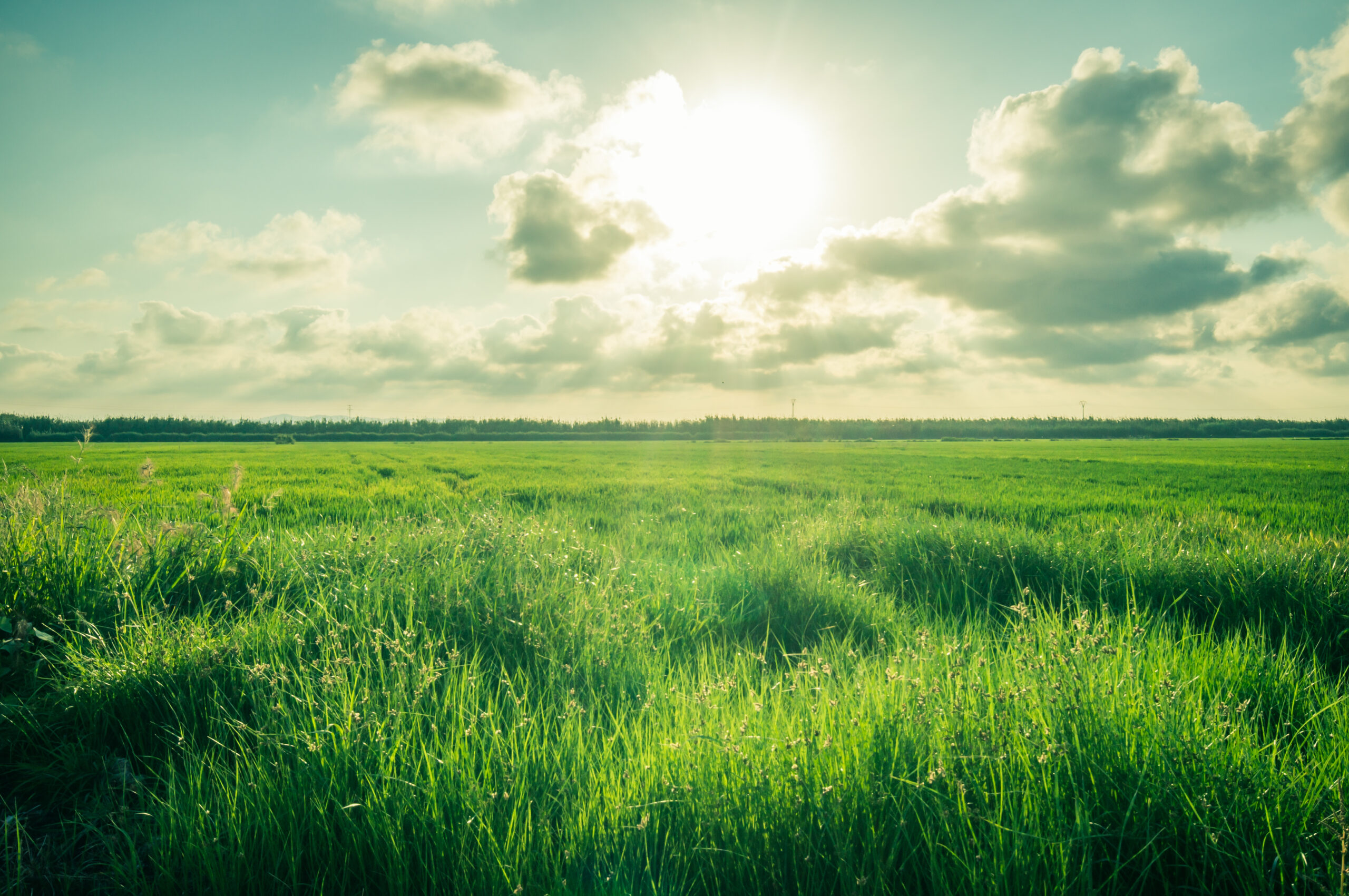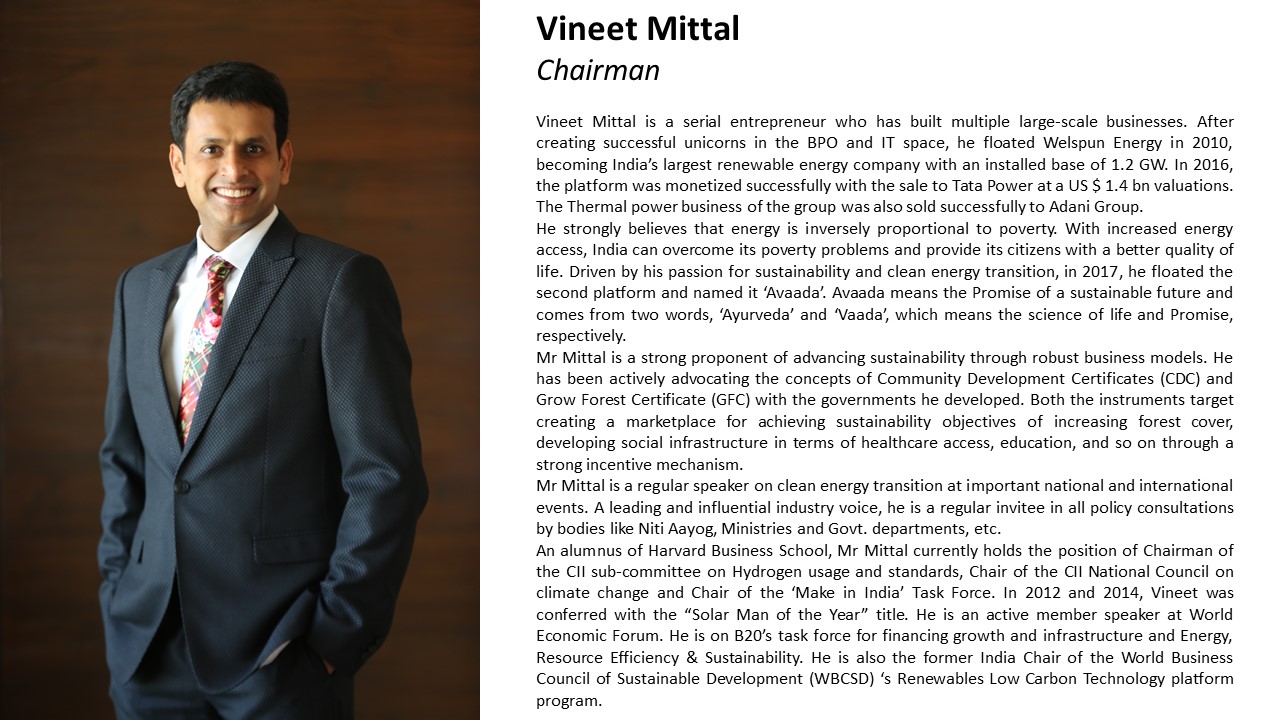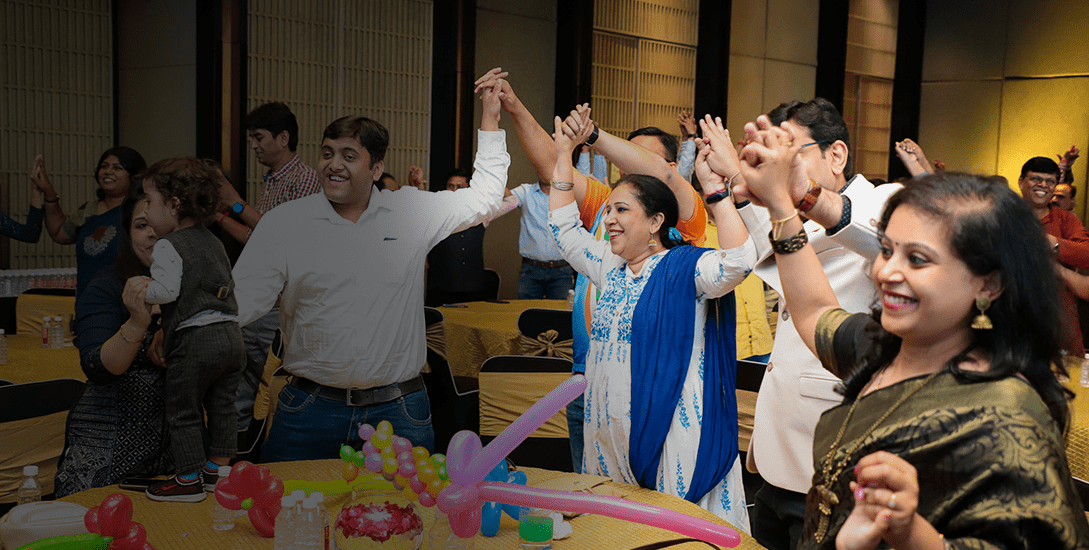
by Vineet Mittal | 5 June, 2022
समुद्रवसने देवि पर्वतस्तनमंडले ।
विष्णुपत्नि नमस्तुभ्यं पादस्पर्शं क्षमस्व मे
Mother Earth, who has the ocean as clothes, adorned by mountains and forests,
And is the consort of Lord Vishnu,
I bow to you to please forgive me for touching you with my feet.
The Vedas have endowed us with a vast array of knowledge that range from environmental protection to ecological balance to rainfall cycles, and just about every phenomenon that occurs on planet Earth. Our ancestors believed in ‘sanrakshan’ – mindful of the society’s role towards sustainability and ecological preservation.
Unfortunately, since the world seems to have grown around us, we have forgotten to fear the invisible cause-effect relations that drive our reality. Now, despite receiving light nudges and warnings across centuries, our collective ignorance in pursuit of creature comforts has lead us to cause irreversible damage to Mother Earth and she is done with throwing us humans helpful hints.
Transverse Impact of Climate Change
A clear, impartial observation highlights the impact climate change has had not only on the current Covid19 Crisis era but has been felt for many decades, amplifying with each year and observed on a worldwide scale. We have always sensed the wrong and harm we have inflicted on nature for centuries. Mother Earth has had many warriors and champions, they warned us, threatened us but humanity never heeded.
Now that nature has taken matters into its own hands and we have been – as a species – driven into hiding and we need to press the refresh button. Things can’t go back to the ‘old ways’ so we have to look, learn, adapt and evolve. From factories to everyday grocery shopping – nothing can stay the same. Burning fossil fuel, the Amazon forest fires, bush fires as well as rising sea levels can no longer be terms we simply find bound between pages inside dusty, old libraries. The wrath of nature has brought these facts closer to home and impacted our everyday lives.
As per the World Health Organization (W.H.O.), fuel emissions alone kill an estimated 7 million people worldwide every year. The ice caps are melting and the sea-water levels are rising by 7 to 8 inches on average since 1900, slowly swallowing land and homes while fueling more inland flooding. From our homes to health to food scarcity if we don’t learn to adapt and grow – extinction isn’t a far off concept.
Playing a balancing game with nature
Humans are driven by comfort and are constantly challenging Mother Nature. Human activities like urbanization, deforestation, infrastructure building, etc. have led to severe decline of pristine natural environment. Rapid ice melting to glaciers floating along with an ever increasing human population had led to depleted biodiversity and loss of multiple essential natural habitats.
From polluting the water to excessive vehicular use, we as a species have pushed a multitude of flora – Silphium, Rhynia, Sigillaria – and fauna – the Black Rhinoceros, White Dolphin, Passenger Pigeon – towards absolute extinction. We have destroyed the balance between several ecosystems whose stability is amicably interdependent.
So then the question arises – ‘Can we undo our harmful actions?’
Even though the answer isn’t quite as straightforward as a yes or a no we need to try.
The solution, it seems, lies in one simple concept – Harmonious Sustainability.
Luckily a lot of research and holistic studies have been done for us. Extensive studies on the ‘Charak Samhita’ with special focus on the third chapter on epidemic diseases could be a start. It elaborates on living together as one with nature and learning how to notice warning signs.
Technology has brought us far. By rebuilding the world and marrying it to nature through eco-friendly methods is a successful step forward. From celebrating renewable energy to growing with plants and trees in their natural habitat to co-existing peacefully with other species are some foundational ideas that encourage Sustainable Living.
Just have faith and take a step forward. For now, Nature has begun to heal; let’s not miss this chance to create a sustainable future for the many generations that are yet to come.
विश्वंभरा वसुधानी प्रतिष्ठा हिरण्यवक्षा जगतो निवेशनी ।
वैश्वानरं बिभ्रती भूमिरग्निमिन्द्रऋषभा द्रविणे नो दधातु ॥६॥
She (Mother Earth) is All-Bearing, She is the Producer of all Wealth,
She is the Foundation on which we live,
She is of Golden Bosom, the Dwelling Place of the World,
She holds The Universal Fire within Her,
May the Mother Earth bestow on us the splendour of that Fire and make us strong.
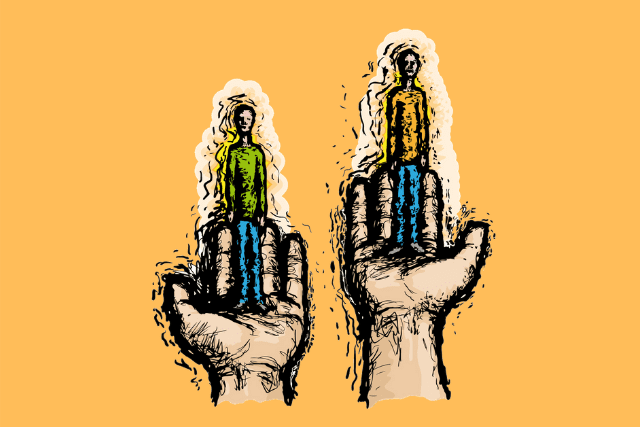
by Vineet Mittal | 17 May, 2020
“It is a mistake to think time is going away. Time is not going anywhere. Time is here until eternity. It is you who is going. You don’t waste time. Time is infinite. You waste yourself. You are finite. Your time on earth is finite. It is you that grows old and dies. Time doesn’t. So make better use of it.
Think of a lion & a shark. Both of them are natural-born hunters. But, a lion cannot hunt in the depths of the ocean and a shark cannot hunt in the jungle.
That a Lion cannot hunt in the ocean does not make it useless, and the same holds true for a shark that cannot hunt in the jungle. Both have their own environment & territory where they can flourish & grow.
If a rose smells better than the tomatoes, It doesn’t mean that it can make a better stew. Don’t compare yourself to others. Instead, use the time to discover yourself. Find your strengths & abilities. Look for them and build on it. All animals that exist, were in Noah’s ark. Snail is also one of those animals. If God could wait long enough for the snails to enter Noah’s ark, his door of grace won’t close till you reach your expected position in life. Never look down on yourself. Keep looking up. Remember that broken crayons can still colour & can craft a new artistic masterpiece.
Keep pushing. You can never tell how close you are to your goal!”
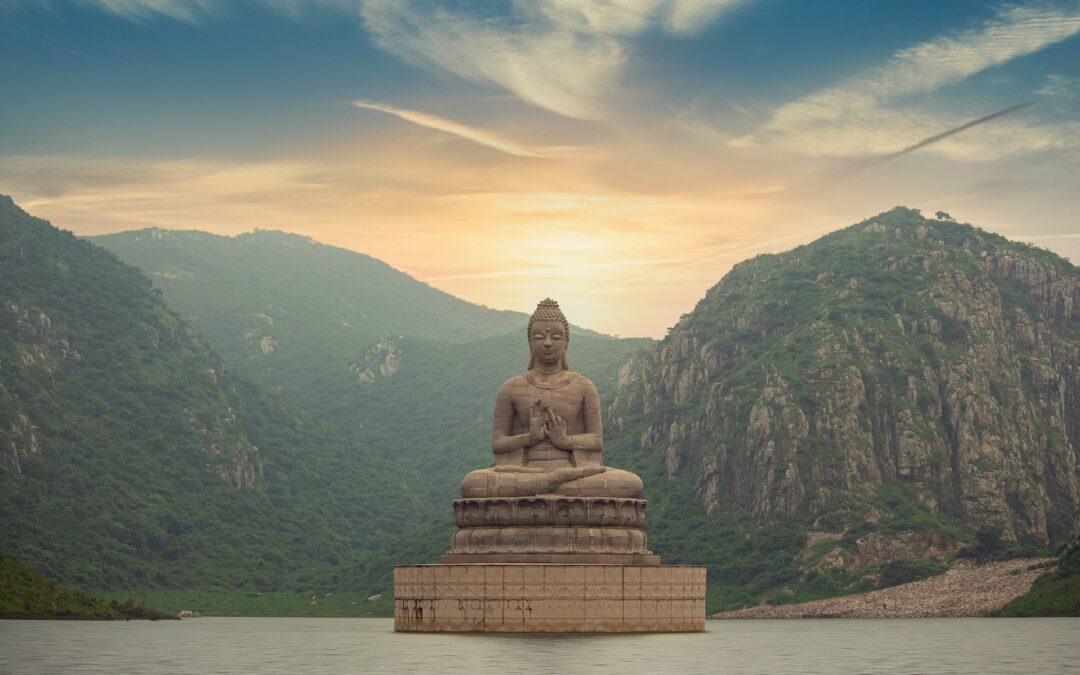
by Vineet Mittal | 7 May, 2020
“It is better to conquer yourself than to win a thousand battles. Then the victory is yours. It cannot be taken from you.” – Lord Buddha
Lord Buddha is said to have found the answers to the most daunting questions pertaining to human existence. His quest started at the age of 29 and ended at 35 with enlightenment.
Post his enlightenment, Buddha spread his wisdom to his disciples & followers on many subjects related to misery, suffering, restlessness & eluding peace in human life. And, these pestilent problems still plague the modern society, and man does not know an escape from them. This includes not just the personal well-being, but also the preservation of the environment that interacts in complex ways with us. This is explained in Paticca Samuppada or ‘Dependent Origination.’
For Lord Buddha, purity of the mind & purity of the environment one lives in, were crucial to attain enlightenment.
Lord Buddha, if he lived today, would have followed the same principled path to help all of us.
His enlightened aura, the grace of his words, the shower of his knowledge and his pious preaching would have had a far grandeur effect on our society. He would have been the supreme sermon on earth, guiding us in the right direction through his halo.
He would have worked for the exaltation of both, the man & the nature he dwells in.
The wisdom discovered by Lord Buddha after enlightenment
Buddha gave the foundation of peace for all of us. He compelled us to comprehend the reality as it comes. His wisdom begins with;
The Four Noble Truths
- Dukkha: Suffering exists: Life is suffering. Suffering is real and almost universal. Suffering has many causes: loss, sickness, pain, failure, and the impermanence of pleasure.
- Samudaya: There is a cause of suffering. Suffering is due to attachment. It is the desire to have and control things. It can take many forms: craving of sensual pleasures; the desire for fame; the desire to avoid unpleasant sensations, like fear, anger or jealousy.
- Nirodha: There is an end to suffering. Attachment can be overcome. Suffering ceases with the final liberation of Nirvana. The mind experiences complete freedom, liberation and non-attachment. It lets go of any desire or craving.
- Magga: In order to end suffering, you must follow the Eightfold Path. There is a path for accomplishing this.
Lord Buddha also gave the Three Universal Truths;
- Nothing is lost in the Universe: Everything that exists is a part of an endless cosmic cycle. Everything flows through time and seems to change. Life & death, are thus, just repetitive cycles.
- Everything Changes: Change is the only constant in the Universe.
- The Law of Cause and Effect: the law of karma says -for every event that occurs, there will follow another event whose existence was caused by the first, and this second event will be pleasant or unpleasant according as its cause was skillful or unskillful.
His wisdom gave his followers a new way to see the life & reality around them. “You are what you are becoming,” Buddha preached.
What would he say to us today?
Seeing the fast pace of life, restlessness, anxiety, pain & suffering that humans experience today, Buddha would recite his noble practices as a remedy to our toxic lifestyle- Sila (Virtue, Good Conduct & Morality), Samadhi (Self-development & meditation lead to wisdom) & Prajna (That wisdom will emerge for a calm & pure mind).
He would also recite to us the teachings of Adhammika Sutta that says- ‘Being a member of the environment the actions of man’s imprudent behavior damages the environment.’ Man is subject to his Karma, good and bad. Thus, his misdeeds can be punished via nature. Living a righteous life and maintaining a pristine environment would have been his lessons for us.
“In the end, only three things matter: How much you loved, how gently you lived, and how gracefully you let go of things not meant for you.” The essence of all his teachings rests in those words.
After all, Lord Buddha’s eternal presence remains with us in the form of his legend & words. Maybe he is all around us, waiting for us to wake up…
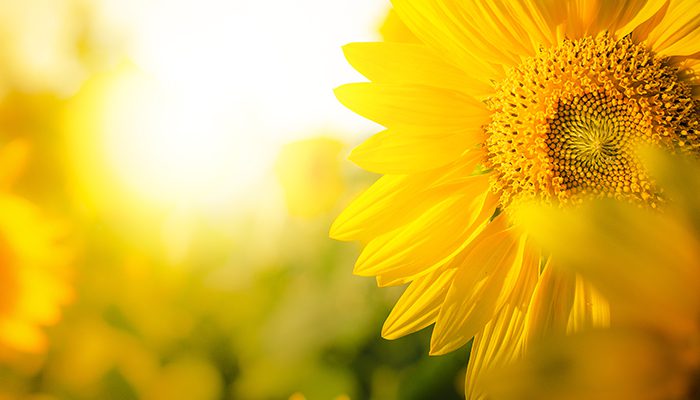
by Vineet Mittal | 13 April, 2020
The society, built around our understanding of the world, was designed to provide us with food, shelter, security & well-being for a peaceful life. Our souls were manifested for compassion, love, spiritual awakening & liberation. However, we strayed away from the path of exaltation by the way of leading a harmonious life. Man became an instrument of selfishness, lust & greed. Now, it yearns to find its way back home.
Our society, which was meant to be a blessing for our future generations, has now come to detest us. Man is restless, anxious, and unhappy- and it is our own servile attitude towards the ‘wants’ & ‘desires’ of life. We forget that life is a balancing act, and on this tight rope we must strike a balance between our desires and virtues.
But, our consciousness has the power to manifest the truth at its will- The answers we seek lie in our roots, in the golden wisdom of our ancestors, which can guide us back to home.
Concept of Purushartha: Centuries old wisdom
According to the ancient Indian texts, a human born on earth must pursue ‘Purushartha’, (पुरुषार्थ), the only way to seek truth and attain salvation.
Puruṣārtha literally means an “object of human pursuit”. It is a key concept in Hinduism and refers to the four end goals of a human life. The four puruṣārthas are Dharma (righteousness, moral values); Artha (prosperity, economic values); Kama (pleasure, love, psychological values); and Moksha (liberation, spiritual values).
- Dharma: It signifies behaviours that are in accord with the order that makes life and universe possible. Dharma includes duties, rights, laws, conduct, virtues and the right way of living. It enlists behaviours that enable social order and virtuous conduct. Dharma is that which humans must accept and respect to sustain harmony in order to create a world worth dwelling in.
- Artha: signifies “means of life”, activities and resources that enables one to be in a state one urges to be in. Artha incorporates wealth, career, and activities to make a living with financial and economic prosperity. The pursuit of Artha is an important aim of human life in Hinduism.
- Kama: It encompasses desires, wishes, passions, emotions, and pleasure of the senses. In other words, the aesthetic enjoyment of life, affection, and love- with or without sexual connotations comprise of Karma. Kāma is “love” without violating dharma (moral responsibility), Artha (material prosperity) and one’s journey towards Moksha (spiritual liberation).
- Moksha: Emancipation & liberation from the cycle of mortality by cultivating virtuous values through meditation forms the basis of Moksha. In some schools of Hinduism, Moksha connotes freedom from saṃsāra, the cycle of death and rebirth. In other schools, Moksha connotes freedom, self-knowledge, self-realization and liberation in this life.
Relative Importance of Goals:
According to Kautiliya’s Arthashastra, artha is the foundation for two goals: Dharma and Kama. Without prosperity and security in the society or at individual level, both moral life and sensuality becomes difficult. Poverty breeds vice and hatred, while prosperity breeds virtues and love.
Kautilya also adds that all three are mutually connected, and one should not cease enjoying life, nor virtuous behaviour, nor the pursuit of wealth creation. However, Excessive pursuit of any one aspect of life with complete rejection of the other two harms all three- including the one that is excessively pursued.
Moksha: the ultimate end or the ultimate beginning?
In Hinduism, Moksha is considered as the ‘parama-puruṣārtha’ or the ultimate goal of human life. Indian scholars recognized and debated, on one hand, the inherent tension between renunciation and Moksha, and on the other, active pursuit of Kama and Artha. This conceived the concepts of Pravrtti (प्रवृत्ति, Pravritti) and Nivrtti (निवृत्ति, Nivritti). The former means giving or devoting one’s self to external action, while the latter means withdrawing and restraining one’s self from external actions in order to focus on one’s own liberation. Both are considered important in Hinduism.
“Action must be taken because it is Dharma, that is, it is good, virtuous, right, a duty and a moral activity, and not because of one’s craving for the results or material rewards.”
This idea of a “craving-free, dharma-driven action” has been called ‘Nishkam Karma’ in the Bhagavad Gita. In fact, Karma-Yoga, a spiritual path based on ‘Yoga of Action’, advocates the same. It is about performing our duty the right way without thinking about ourselves, and even the results. This can be only attained when one overpowers his/her ego. Only then the attachments & desires can be decimated and the right outcome manifests.
Whatever we have today- big or small, trivial or vital, cheap or expensive, rare or abundant, is the result of Karma Yoga of those around us. The clothes we wear, the food we eat, the car we drive, the knowledge we attain and the joy we derive from these things. We are actually a big family where we work to make each other’s lives better. But, do we see the world like that anymore?
If we begin our day with the simple principles of life, orient our minds towards Karma Yoga to benefit others selflessly and take joy in the simplest things in life, salvation shall be found. We are all just a thought away from making this a reality!
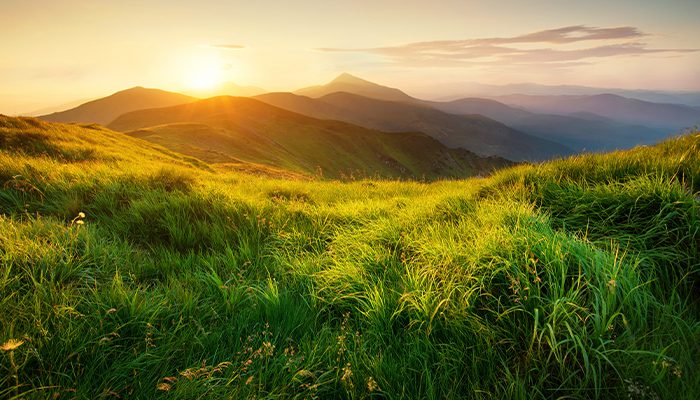
by Vineet Mittal | 7 April, 2020
The novel coronavirus outbreak has now been detected in more than 200 countries affecting millions of people across the globe and has created a worldwide havoc. The nations across the globe are deploying all the resources at their disposal to combat the unprecedented crisis. India has been at forefront to in the fight against the pandemic and as directed by Hon’ble Prime Minister Narendra Modi is under lockdown since 22 March 2020. The cooperation extended by a more than 1.3 billion is exemplary.
The usual and anxious time has created a death-like crisis not just for individuals but for businesses and economies. While times are challenging, it has also provided unique opportunity to humanity to understand and reflect on human suffering and underlying reasons.
If we observe dispassionately, there are some very positive changes that have happened around us. These are changes, we yearned but never made conscious efforts towards achieving them.
- Nobody is hurrying up early in the morning to rush for the office
- No unwanted traffic of polluting vehicles
- Rivers are cleaner due to closure of polluting manufacturing units
- Families are spending more time together at home
- People are learning to adapt to non-luxurious lifestyle
- Kids are at home and eating healthy food
- Latest fashion is no longer a concern
There has been a remarkable transformation in condition of the planet. It is evident from the fresh air with significantly lower AQI levels. The visibility of mountains from cities, returning of dolphins in Marine drive beach in Mumbai, shows quick self-regeneration and healing capability of the planet in the absence of human interference. While, there is improvement in climatic condition, it took a pandemic to do so is a pity.
The fact that a microorganism ‘coronavirus (COVID-19) can bring the humanity to its knees shows that the countries across the globe that they are living in false sense of invincibility and exposed our vulnerability. People must take note of hidden message – it is possible to live a life without overindulgence and incessant exploitation of resources. The pandemic shown to the world that even with most sophisticated weapons you cannot a fight a nature’s wrath.
It is critical to understand moving away from lifestyle which is driven by overindulgence and living in harmony with nature are only ways for humanity to survive. While concept may new to the Western world but for Indians, this was always part of our culture – we just need to dig deeper into our texts and traditions. The foundation of our culture and tradition lies in ‘The Vedas’. Vedas are the most precious source of all the knowledge. They consist of thoughts and ideas about living in proximity to nature. One of the shlokas from our oldest Veda – Rig Veda, describes the current situation aptly
तवं नो अस्या अमतेरुत कषुधो अभिशस्तेरव सप्र्धि | तवं न उती तव चित्रया धिया शिक्षा शचिष्ठ गातुवित ||
It clearly says that whenever there is a suffering from an uncurable death-causing disease, then the only ways to deal with it would be creating boundary (self-quarantine), using your own wisdom and being disciplined.
Though teachings of Indian culture have been systematically degraded, most of them had solid scientific rationale which is evident from relevance that hold even in the present times. Our ancient heritage has all the precious knowledge that we need to know. In the race of adopting western culture and lifestyle, we have abandoned it. A sudden standstill to human activities and subtly visible impact on earth’s environment is not a coincidence. It is a clear indication of lost balance between interrelated mutually sustaining resources on earth. This illustrates that nothing in the world is as uncontrollable as it appears.
Though, it seems that life has been stopped. But humankind has been given another chance to rethink of their actions and act sustainably in all ways. At the time of uncertain clouds, there is a visible silver lining which we all should see. Possibly, overcoming of this pandemic can prove to be a ‘blessing in disguise’.
Kale varshatu parjanya,
Prithivi sasya shalini
Deshoyam kshobharahitaha
Brhamana santu nirbhayaha
Let the monsoon be timely and plentiful
Let earth be covered with vegetation
Let the country live without problems
And let good people never have fear.
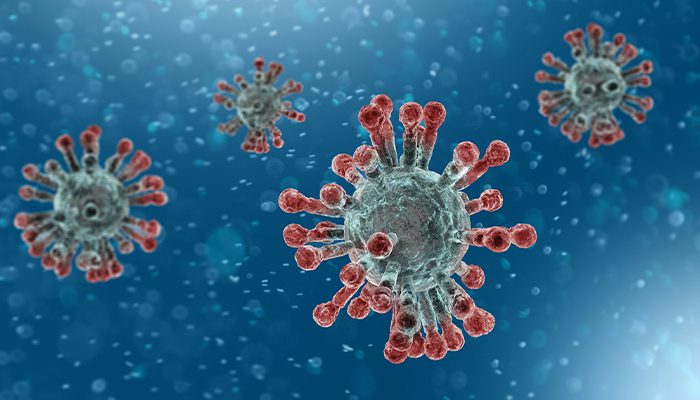
by Vineet Mittal | 26 March, 2020
Amid the fear, worry, and uncertainty surrounding the coronavirus pandemic, each day seems to bring news that’s worse than the day before. The cause for concern is justified. But, as in most major disasters, tragedies, and public health threats, there are reasons for hope, and even optimism. They may be hard to see, even if you’re a “cup-half-full” or “it could always be worse” type of person.
But they are there. Here are a few. The good news about the coronavirus pandemic
- Most people with COVID-19 recover.
Estimates now suggest that 99% of people infected with the virus that causes COVID-19 will recover. Some people have no symptoms at all. And while thousands of people have died, the overall death rate is about 1% (or perhaps even lower), far less than MERS (about 34%), SARS (about 11%), or Ebola (90%), though higher than the average seasonal flu (0.1%). The loss of life related to this illness is terrible and far more cases are expected, but based on the fatality rates alone, it could be far worse
- The number of new cases is falling where the outbreak began: During his speech declaring the new coronavirus outbreak a pandemic, the director-general of the WHO pointed out that “China and the Republic of Korea have significantly declining epidemics.” In fact, Wuhan province (site of the very first cases) has just reported no new local cases for the first time since the outbreak began. The only new cases were “imported” from travellers arriving there.
- The internet exists: We currently have ways to practice social distancing that preserve at least some social and medical connections. People in isolation or quarantine can ask for help, visit friends, “see” family and doctors virtually, and provide updates on their condition.
Balance is the need of hour!
The present crisis should be taken as a reminder by humanity that it is not invincible. We must collectively come out with alternate way of living. Leaders across the globe must ponder and come out with a sustainable framework of development. Striking a right balance between development and environment be ignored further.
We must draw learning from Vedic literature which had the realisation that the pure water, air etc. are the roots of to good health and happiness and hence they considered all these as gods. The Vedic people desired to live a long life this wish can be fulfilled only when environment will be unpolluted, clean and peaceful.
The sages recited the following verse for centuries which is give an appropriate message of balance between various elements of almight’s creation
ॐ द्यौः शान्तिरन्तरिक्षं शान्तिः
पृथिवी शान्तिरापः शान्तिरोषधयः शान्तिः ।
वनस्पतयः शान्तिर्विश्वेदेवाः शान्तिर्ब्रह्म शान्तिः
सर्वं शान्तिः शान्तिरेव शान्तिः सा मा शान्तिरेधि ॥
ॐ शान्तिः शान्तिः शान्तिः ॥
“Let there be balance in the space !
Let there be balance in the sky !
Let there be peace on the earth !
Let there be calmness Let there be !
Let there be growth in the plants !
Let there be growth in the tree !
Let there be grace in the Gods !
Let there be bliss in the Brahman !
Let there be balance in everything !
Let there be peace and peace !
Let such peace be with everyone of us !”







